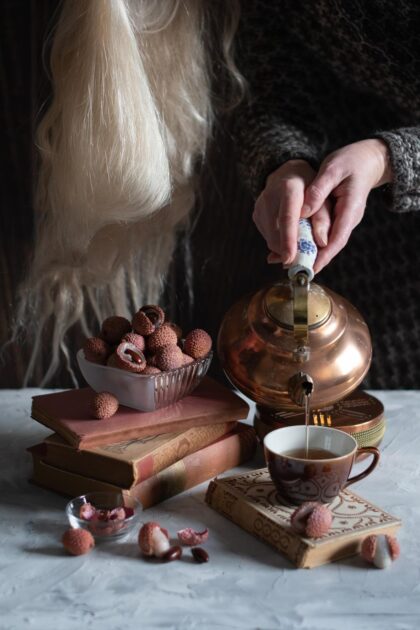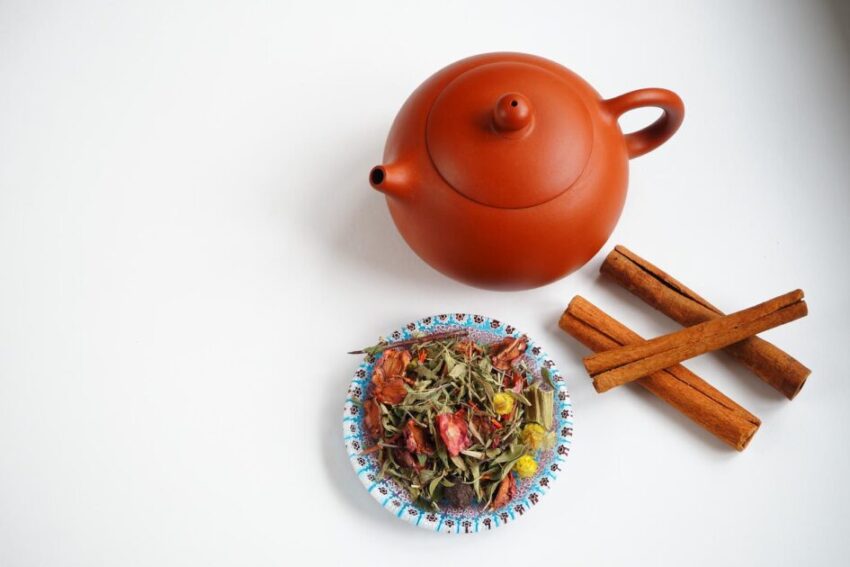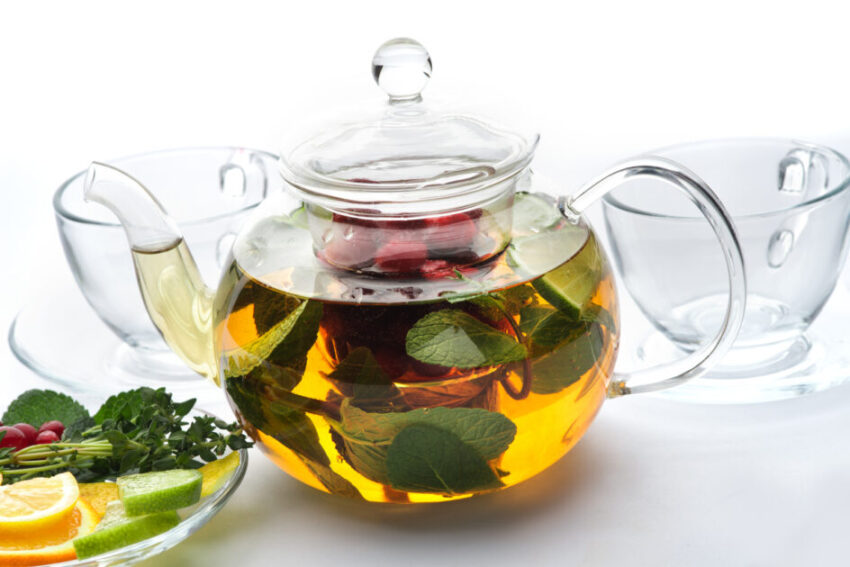- Intro
- Overview of teapots and kettles
- Different types of teapots and kettles
- Gooseneck kettle
- You choose
- Benefits of using a teapot vs a kettle
- Drawbacks of using a teapot vs a kettle
- Price comparison of teapot vs kettle
- How to choose between a teapot or a kettle?
- Experience of using both a teapot and a kettle
- Clean your pot
- It’s a matter of preference
- Frequently Asked Questions
- What is the difference between electric and stovetop tea kettles?
- How long does it take for a stovetop kettle to boil?
- What are the benefits of using a teapot instead of a kettle?
- Electric kettle or standard stovetop kettle? Is an electric tea kettle worth it/better?
- Conclusion
Intro
There’s nothing like a warm cup of tea to jumpstart your day or relax at the end of it. Whether you’re a new tea drinker or a seasoned pro, you might be curious about the best way to boil water to get the best out of your beverage. Enter the question of whether to use a teapot or a kettle. While both have their benefits and drawbacks, the choice ultimately depends on your brewing needs, preferred taste, and experience.
In this blog, we’ll go over an overview of teapots and kettles, the different types available, the benefits and drawbacks of using both, a price comparison, and how to choose between the two. We also dive into the experience of using both to give you a good idea of which one might suit your needs best.

Overview of teapots and kettles
Both teapots and kettles can be used to make your daily cuppa, but they serve different purposes. Kettles are versatile tools used in the kitchen for brewing tea, coffee, oatmeal, and other drinks or foods that require hot water.
Stovetop kettles come in a wide range of varieties, some of the most popular brands being Le Creuset Demi Kettle, Fellow Clyde Stovetop Kettle, Simplex Buckingham No 1 by Newey & Bloomer Kettle, Martha Stewart Blue Tea Kettle, Hario Buono Kettle, Demeyere Resto 4.2-Quart Water Kettle, cast iron tea kettle, stainless steel kettle and Chantal Vintage Tea Kettle. Teapots, on the other hand, are specifically designed to brew tea and keep it hot.
Teapots come in various styles, including ceramic, glass, and cast-iron teapots, making them an attractive option for tea lovers. Ultimately, the choice between a teapot and a kettle depends on your preferences – whether you want to focus specifically on brewing tea or if you want a tool that can do more in the kitchen.

Different types of teapots and kettles
When it comes to making a perfect cuppa tea, choosing the right equipment is essential. There are many types of kettles and teapots available in the market, including stove top kettles, tea cups & coffee mugs, electric tea kettles, and vintage teapots. A tea kettle is used for boiling water, while a teapot is used for steeping tea.They both come in a variety of materials.
Tea kettles are available in various sizes, ranging from 1 to 2 quarts. Electric kettles are generally smaller than stovetop models. The efficiency, design, and ease of use and cleaning are some factors that may influence the performance of a tea kettle. Meanwhile, teapots also come in different sizes, shapes and designs for your requirements.
Whether you prefer a teapot or a kettle depends on your personal preference and ease of use. If you are looking for ease of use and convenience, then an electric kettle may be the better choice. But if you want to enjoy the traditional tea experience, a teapot may be a good option.



Gooseneck kettle
A gooseneck kettle is a precision-designed appliance, typically made of stainless steel or copper, with a long slender spout and handle used to heat water for use in brewing coffee or tea. The kettle’s neck design enables more precise pouring than other types of kettles.
A teapot generally has a shorter spout, wider opening at the top and can range from ceramic to cast iron material construction as opposed to metal like stainless steel that might be found on a gooseneck kettle. Teapots often have ornate designs and intricate details, making them a popular choice for tea enthusiasts who value aesthetics as much as function.

You choose
For those who prioritize speed and versatility, a kettle might be the better choice, while those who prefer a more leisurely tea time and appreciate the slow infusion process may prefer to use a teapot. Ultimately, both teapots and kettles have their pros and cons, and it’s up to the individual to decide which is the better fit for their tea-making routine.
Benefits of using a teapot vs a kettle
Tea lovers all around the world are torn between which one is better – a teapot or a kettle? Electric kettles are a more convenient option for tea drinkers as they heat up water faster than stovetop kettles. This means that you can have a hot cup of tea ready in no time. Variable temperature electric kettles allow more control over the temperature of the water, which is beneficial for certain types of tea that require a specific water temperature to steep properly.
Besides being convenient, electric kettles are incredibly easy to use and come with many features such as cordless and automatic shutoff, which make them safer to use. Electric kettles also come in a variety of capacities and have an easy-to-pour spout, making them an excellent choice for any tea lover. However, a teapot has its own unique charm for those who enjoy the traditional way of brewing and serving tea. Ultimately, the choice is yours – explore both options and see which one works best for you!


Drawbacks of using a teapot vs a kettle
When it comes to convenience, kettles are the clear winner, and electric kettles, in particular, are more favored than teapots. Electric kettles are quicker than a stove-top kettle and have advanced features, such as preset temperature settings. Additionally, stove-top kettles are less expensive and easier to find compared to a teapot.
However, some notable drawbacks of teapots include longer heating times and susceptibility to breakage, as they are more likely to be made of fragile materials. Moreover, some teapots may not be suitable for certain types of tea, which may require specific brewing conditions. These factors should aid in deciding whether you prefer a teapot or a kettle for your daily cuppa – convenience or traditional tea brewing.


Price comparison of teapot vs kettle
When it comes to the price, a traditional stovetop kettle is cheaper when compared to an electric kettle. However, it is important to note that electric kettles offer features such as precise temperature control and automatic shut off, making them convenient for daily use. If you are looking for an affordable stovetop kettle, the Mr. Coffee Flintshire Stainless Steel Whistling Tea Kettle for $20 or the Cuisinart Aura 2-Quart Tea Kettle for $25 on Amazon can be a great option.
If you are looking for something fancier, the Chantal Anniversary Enamel on Steel Whistling Tea Kettle is available for $50 on Amazon. Ultimately, the choice between a teapot and a kettle comes down to personal preference and usage habits.

How to choose between a teapot or a kettle?
Choosing between a teapot and a kettle can be challenging. The decision depends on your preference for a few key factors. Electric kettles typically heat water faster than stovetop kettles. For water boiling speed, electric kettles are ideal.
Electric kettles have convenient features like automatic shutoff, cordless and base rotation. Stovetop tea kettles offer more design options, which can add value as a kitchen accessory. They can heat water beyond the boiling point, making them great for loose leaf tea. Ultimately, which to choose comes down to what you prefer in a tea-making experience.

Experience of using both a teapot and a kettle
Both teapots and kettles are essential for making tea. Kettles are designed to heat water quickly and efficiently, and many have features such as cordless operation and automatic shutoff for added convenience. On the other hand, teapots are generally more traditional and have a small lid, a spout, and a handle. They’re designed to steep tea leaves or bags, and they come in different shapes and sizes.
If you’re a fan of pour-over coffee or other types of brewing methods that require hot water in concentrated streams, then a kettle is probably your best bet. Teapots are designed more for steeping tea, of course, but they can also be used for other beverages, such as cocoa or hot cider.

Clean your pot
Regardless of which one you choose, it’s important to clean your teapot or kettle regularly. White vinegar and water work well for removing mineral buildup and keeping your tea tasting fresh. Ultimately, whether you prefer a teapot or kettle will depend on your personal preference and how you like to make your tea or other hot beverages.
A kettle is a heating vessel that boils water to make it hot, while a teapot is used for steeping and pouring tea. Kettles can come in many different materials such as stainless steel, cast iron or ceramic. Teapots usually get made of glass, porcelain or ceramics and are designed mainly with infusing herbal tea in mind.
However, for those who take their tea seriously, the type of vessel used to steep the tea plays a crucial role in ensuring the perfect cups of tea. Ceramic and porcelain teapots are great for brewing traditional or herbal teas, while glass teapots are perfect for showcasing the beauty of blooming teas. Cast iron teapots, on the other hand, are known for their heat retention properties, making them ideal for brewing strong and bold teas such as black teas.
It’s a matter of preference
For those who prefer using kettles, gooseneck kettles are becoming popular among tea enthusiasts due to their precise and controlled pouring capabilities, which allow for a more uniform steeping experience. However, it’s important to keep in mind that steeping tea for too long or using water that is too hot can result in a bitter taste.
At the end of the day, whether you choose a teapot or a kettle, it’s the quality of the tea leaves and the brewing process that will ultimately determine the perfect cup of tea. So, grab your favorite tea infuser and start brewing your way to tea heaven.
Kettles take much less time to boil water than teapots do; however they cannot create the perfect cup of tea like most teapots can using an inserted tea infuser feature inside them.

Black kettle for brewing tea. Along with a lid.
Frequently Asked Questions
What is the difference between electric and stovetop tea kettles?
The main difference between electric and stovetop tea kettles is the heating method. Electric kettles are powered by electricity and have a heating element inside that brings water to a boil quickly, while stovetop kettles are placed directly on a stove and rely on the heat from the burner to heat up the water.
Electric kettles are generally faster and more energy-efficient, while stovetop kettles are often more affordable and can be more aesthetically pleasing. Ultimately, the choice between the two will depend on individual preferences and needs.

How long does it take for a stovetop kettle to boil?
The time it takes for a stovetop kettle to boil will vary depending on several factors, such as the amount of water in the kettle, the type of stove you’re using, and the material the kettle is made of. On average, however, it usually takes about 3-5 minutes for a stovetop kettle to boil. green tea, oolong tea, white tea and black tea are just an example of the type of tea you can enjoy.

What are the benefits of using a teapot instead of a kettle?
Using a teapot instead of a kettle has several benefits. Firstly, it allows for the infusion of loose tea leaves, which can provide a richer and more nuanced flavor than tea bags. Secondly, a teapot often has a built-in strainer, preventing loose tea leaves or sediment from entering your cup. Additionally, a teapot can help retain heat better than a kettle, keeping your tea at an optimal temperature for longer periods. Finally, using a teapot can be a more elegant and enjoyable way to serve and enjoy tea, making it an excellent addition to any tea lover’s home.

Electric kettle or standard stovetop kettle? Is an electric tea kettle worth it/better?
An electric tea kettle can certainly offer convenience and speed when it comes to boiling water for tea or other hot beverages. Compared to a traditional stove-top kettle, an electric kettle can heat water more quickly and often includes safety features such as automatic shut-off and boil-dry protection.
Additionally, some electric kettles offer features like temperature control and keep-warm functions that can enhance your tea-drinking experience. Overall, whether an electric tea kettle is worth it or better depends on your personal preferences and needs.

Conclusion
After comparing the benefits and drawbacks of teapots and kettles, it all boils down to personal preference. But before you make your choice, consider what you value most. Do you prefer convenience or a more traditional tea-making experience? Do you want to prioritize design or functionality?
Regardless of your decision, investing in high-quality teapots and kettles that meet your needs will make your tea time a delight. We hope you enjoyed our comprehensive blog on the ultimate showdown: teapot vs. kettle to help you make an informed decision and have a great cup of tea.

Pingback: THE LIST OF THE BEST BOROSILLICATE GLASS TEA KETTLES
Pingback: Loose Leaf Green Tea! We Choose The Best Right Now -